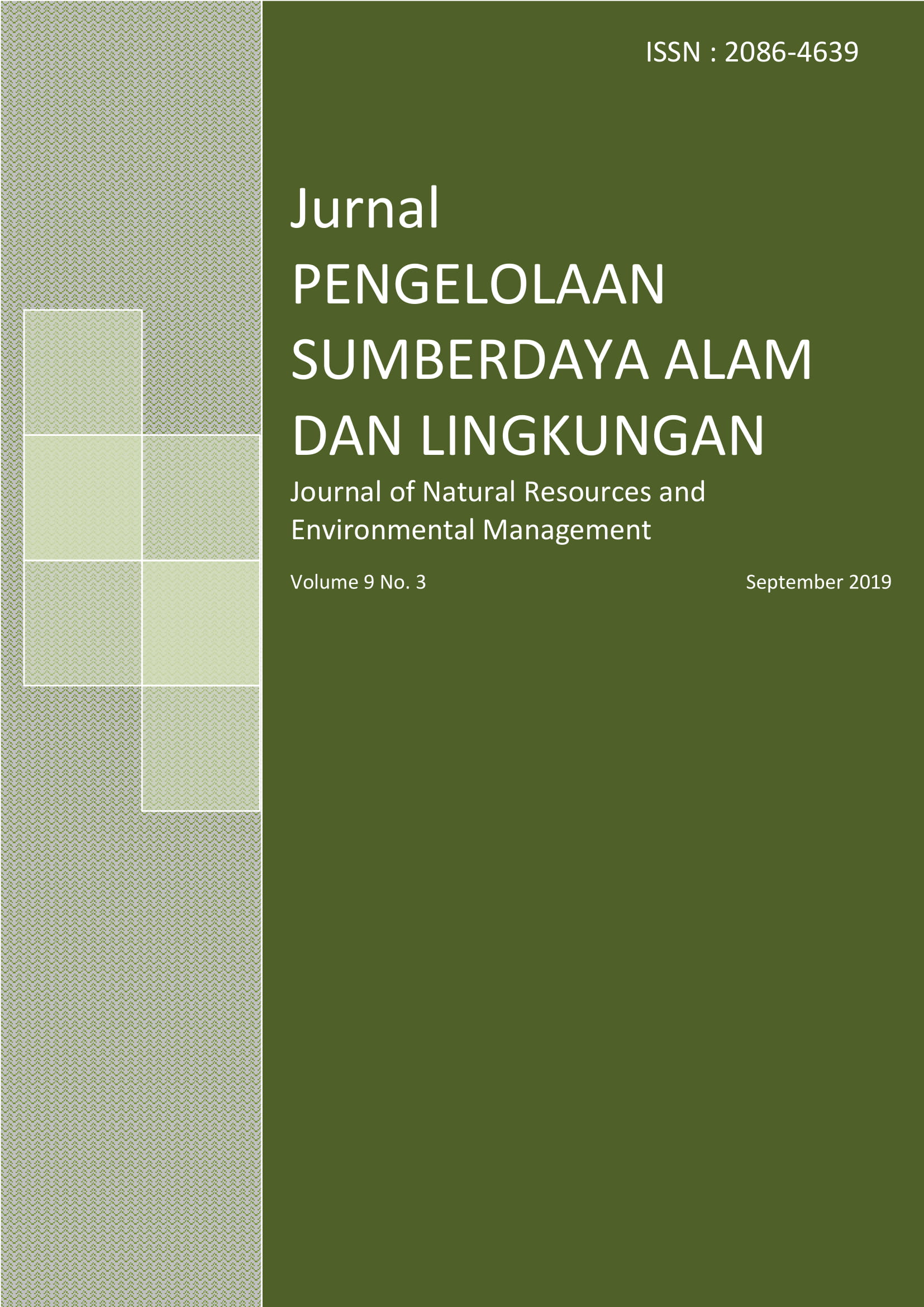Uji Efektivitas Inokulum Fungi Mikoriza Arbuskula Terhadap Pertumbuhan Bibit Jati (Tectona Grandis Linn. F)
Abstract
References
Corryanti TWN, Soedarsono J, Radjagukguk B, Widyastuti SM. 2007. Perkembangan mikoriza arbuskula dan pertumbuhan bibit jati (Tectona grandis Linn. F) yang diinokulasi spora fungi mikoriza arbuskula asal tanah hutan tanaman jati. Jurnal Pemuliaan Tanaman Hutan. 1(2): 1-7.
Danu, Kurniaty R, Mindawati N. 2015. Penggunaan pupuk mikoriza dan pupuk NPK dalam pembibitan jabon merah (Anthocephalus macrophyllus (Roxb.) Havil). Balai Penelitian Teknologi Perbenihan Tanaman Hutan.
Daru TP, Sudarmadi, Setiadi Y, Riyanto, Abdullah L. 2007. Pengaruh tipe inokulan mikoriza arbuskula pada pertumbuhan rumput signal (Brachiaria decumbens Stapf.). Dalam: Prosiding seminar nasional mikoriza dalam kongres mikoriza ke-2, SEAMEO BIOTROP Bogor 17-21 Juli 2007.
Duryea ML, Brown GN. 1984. Seedling Physiology and Reforestaion Success: Proceedlings of the Physiology Working Group Technical Session (Forestry Sciences). Dordrecht: Martinus Nijhoff Publishers.
Gutjahr C. 2014. Phytohormone signaling in arbuscular mycorhiza development. Journal Plant Biology. 20, 26-34.
Hajoeningtijas OD. 2009. Ketergantungan tanaman terhadap mikoriza sebagai kajian potensi pupuk hayati mikoriza pada budidaya tanaman berkelanjutan. Jurnal AGRITECH. XI (2):125-136.
Iffis B, Arnaud M, Hijri M. 2014. Bacteria associated with arbuscular mycorrhizal fungi within roots of plants growing in a soil highly contaminated with aliphatic and aromatic petroleum hydrocarbons. Journal FEMS Microbiol Lett. 358:44-54.
Kapulnik Y, Tsror L, Zipori I, Hazanovsky M, Wininger S, Dag A. 2010. Efeect of AMF application on growth. productivity and susceptibility to Verticillium wilt of lives grown under desert condition. Symbiosis. 52 (2-3): 103-111.
Khastini RO, Triadiati, Sukarno N. 2007. Pengaruh fosfor pada bawang daun hidroponik bermikoriza dan pemanfaatan limbahnya untuk pertumbuhan tapak dara. Dalam: Prosiding seminar nasional mikoriza dalam kongres mikoriza ke-2. SEAMEO BIOTROP Bogor 17-21 Juli 2007.
Karepesina S. 2007. Keanekaragaman fungi mikoriza arbuskula dari bawah tegakan jati ambon (Tectona grandis Linn. F) dan potensi pemanfaatannya. Tesis. Bogor: Sekolah Pascasarjana, Institut Pertanian Bogor.
Nusantara AD. 2011. Pengembangan Produksi Inokulan Fungi Mikoriza Arbuskula berbasis bahan alami dan pemanfaatannya untuk tanaman Jati (Tectona grandis). Disertasi. Bogor: Sekolah Pascasarjana, Institut Pertanian Bogor.
Nusantara AD, Bertham YH, Mansur I. 2012. Bekerja dengan Fungi Mikoriza Arbuskula. Bogor: SEAMEO BIOTROP.
O’Connor PJ, Smith SE, Smith FA. 2001. Arbuscular mycorrhizal associations in the southern Southern Simpson desert. Aust. J. Bot. 49:493-499.
Prayudyaningsih R, Sari R. 2016. Aplikasi fungi mikoriza arbuskula dan kompos untuk meningkatkan pertumbuhan semai jati (Tectona grandis Linn. F) pada media tanah bekas tambang kapur. Jurnal Penelitian Kehutanan Wallacea. 5(1):37-46.
Rillig MC, Wright SF, Eviner VT. 2002. The role of arbuscular mycorrhizal fungi and glomalin in soil aggregation: comparing effects of five plants species. Plant soil. 238: 325-333.
Rumondang J, Setiadi Y. 2011. Evaluasi aplikasi fungi mikoriza arbuskula dan respon pertumbuhannya terhadap jati (Tectona grandis Linn. F) di Persemaian. Jurnal Silvikultur Tropika. 2(3): 194-197.
Santosa AC, Harwati T, Siswadi. 2013. Pengaruh pemberian mikoriza arbuskula dan pupuk organik terhadap pertumbuhan bibit jati putih. Jurnal Inovasi Pertanian. 12(2): 53-66.
Simanungkalit RD, Saraswati R, Hastuti RD, Husen E. 2006. Bakteri Penambat Fosfat. Dalam: Simanungkalit RD, Suriadikarta DA, Saraswati R, Setyorini D, Hartatik W, Editor. Pupuk Organik dan Pupuk Hayati. Bogor: Badan Penelitian dan Pengembangan Pertanian.
Smith SE, Read DJ, 2008. Mycorrhizal Symbiosis (Third Edition). New York: Academica Press.
Smith SE, Facelli E, Pope S, Smith A. 2010. Plant performance in stressful environments: interpreting new and established knowledge of the roles of arbuscular mycorrhiza. Plant soil. 326:3-20.
Warouw V, Kainde RP. 2010. Populasi jamur mikoriza vesikular arbuskular (MVA) pada zone perakaran Jati. Jurnal Eugenia. 16(1):38-45.
Authors
Authors who publish with this journal agree to the following terms:
- Authors retain copyright and grant the journal right of first publication with the work simultaneously licensed under a Creative Commons Attribution License that allows others to share the work with an acknowledgement of the work's authorship and initial publication in this journal.
- Authors are able to enter into separate, additional contractual arrangements for the non-exclusive distribution of the journal's published version of the work (e.g., post it to an institutional repository or publish it in a book), with an acknowledgement of its initial publication in this journal.
- Authors are permitted and encouraged to post their work online (e.g., in institutional repositories or on their website) prior to and during the submission process, as it can lead to productive exchanges, as well as earlier and greater citation of published work (See The Effect of Open Access).






